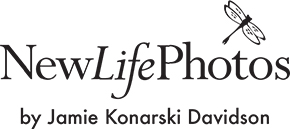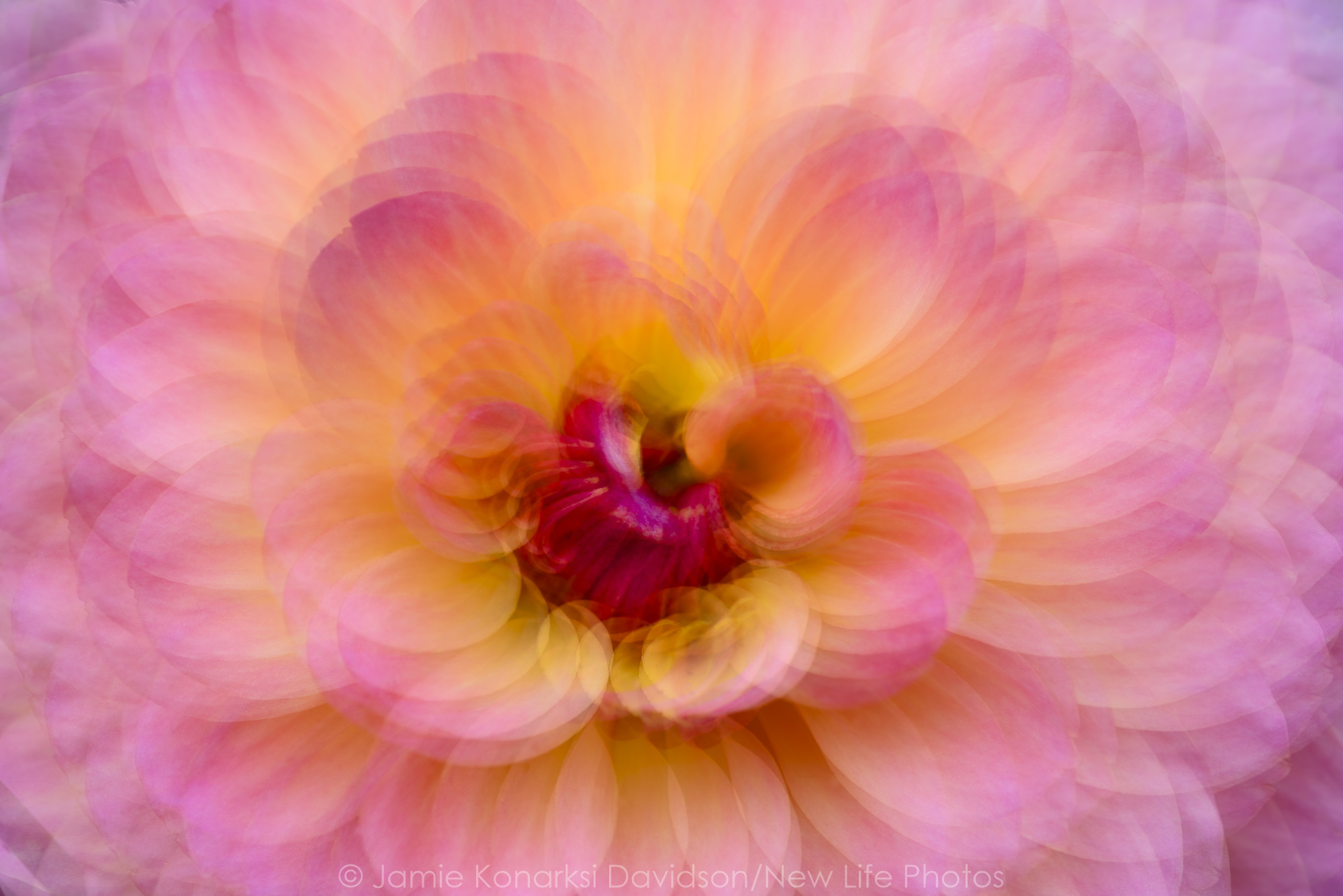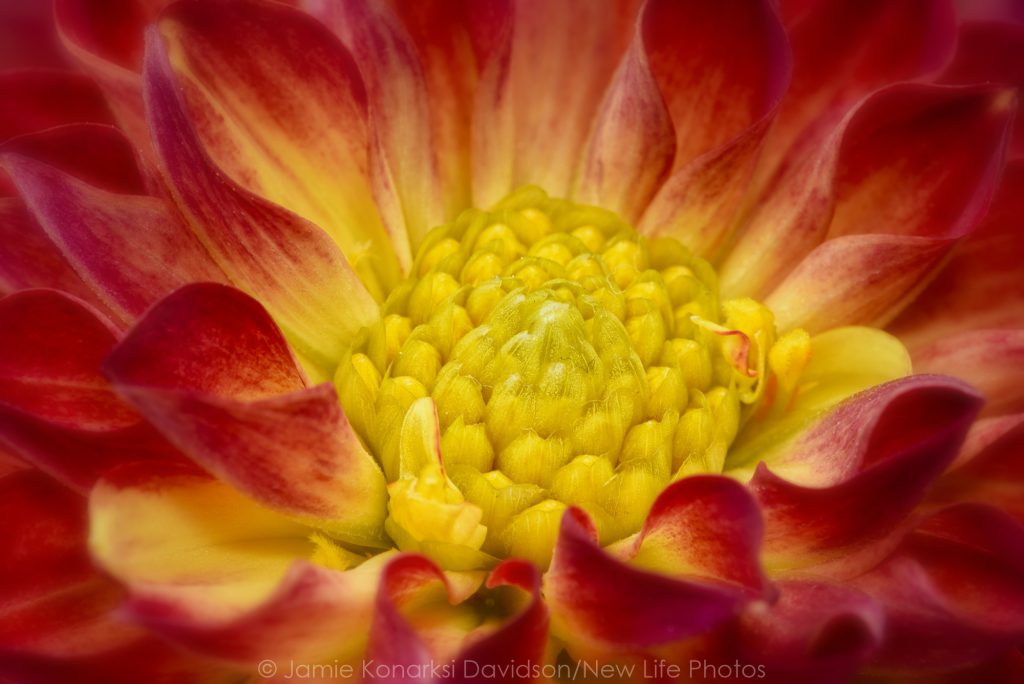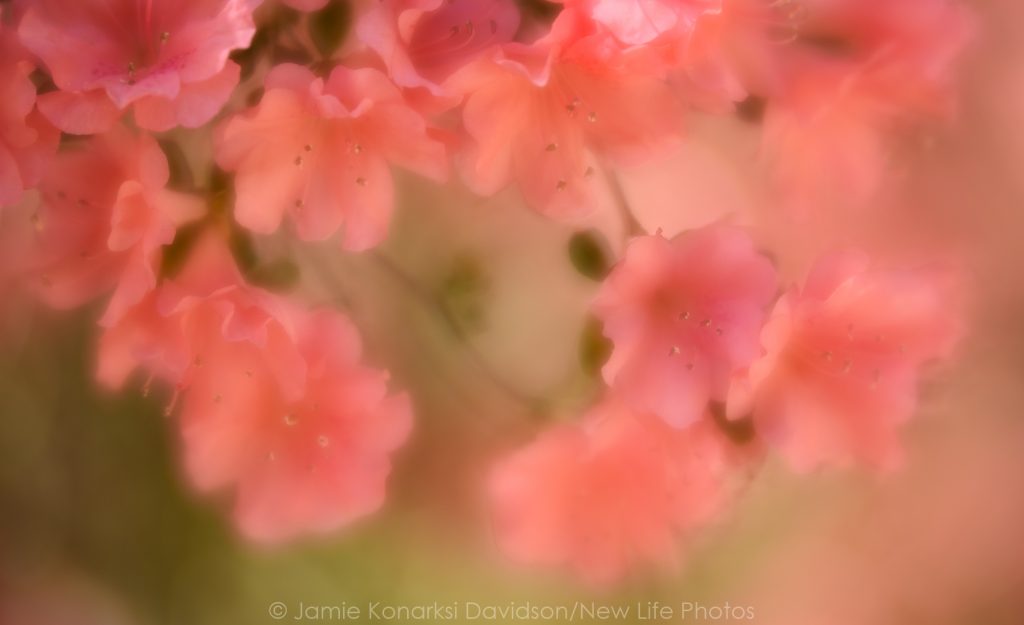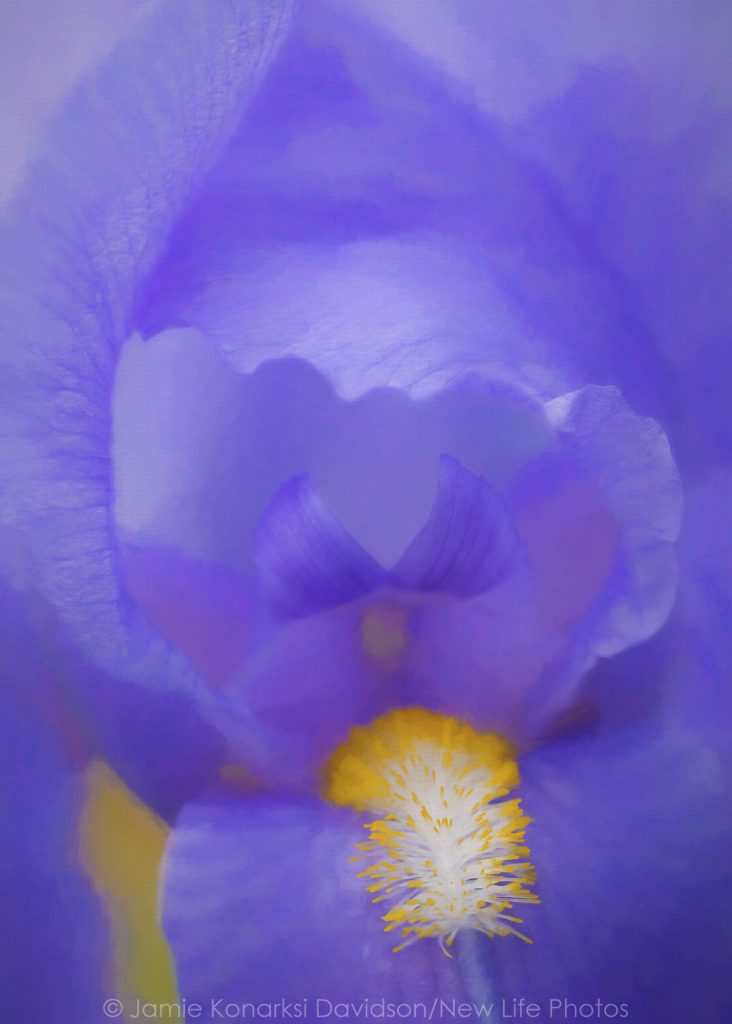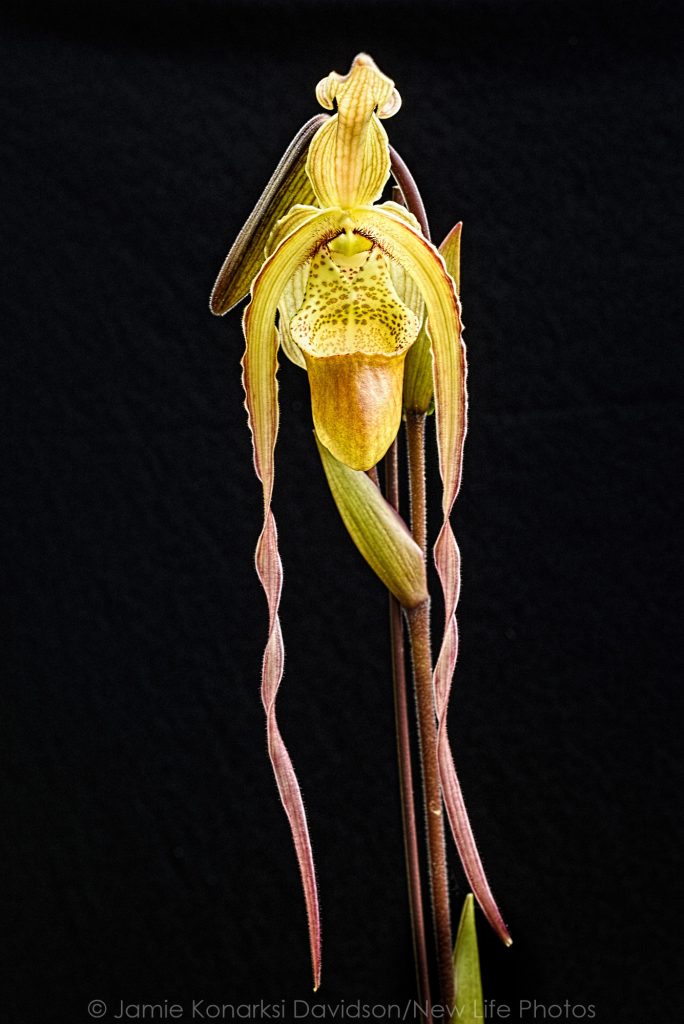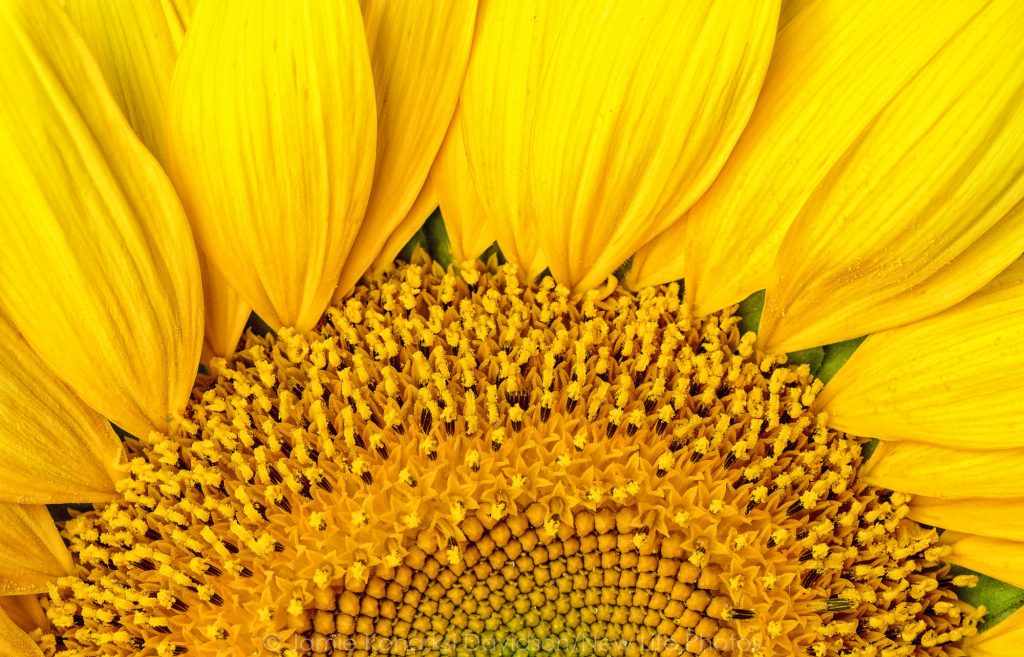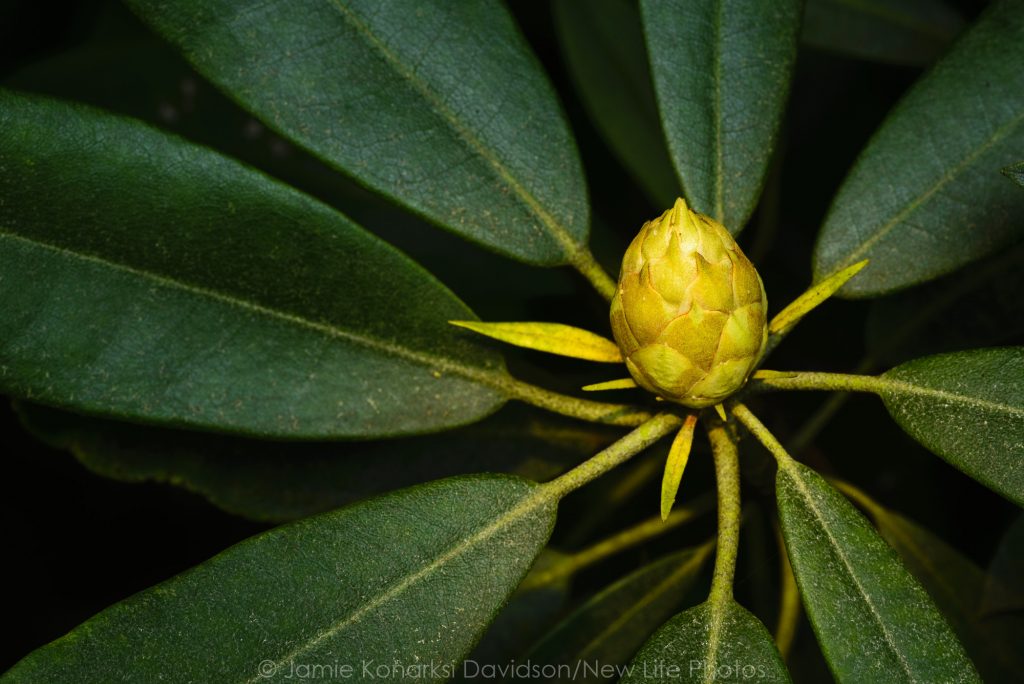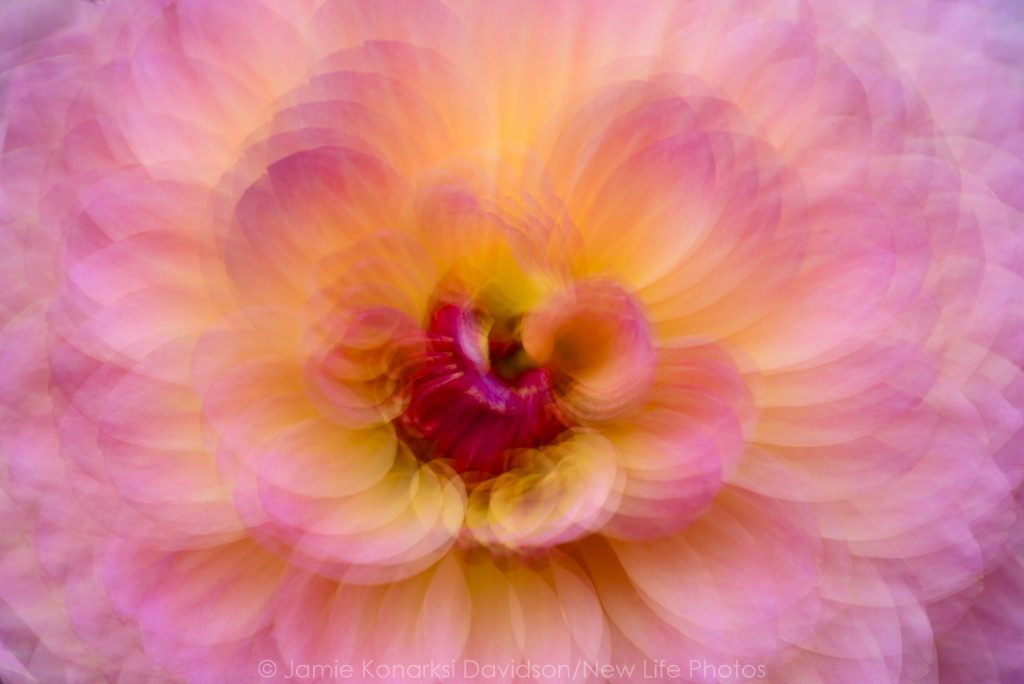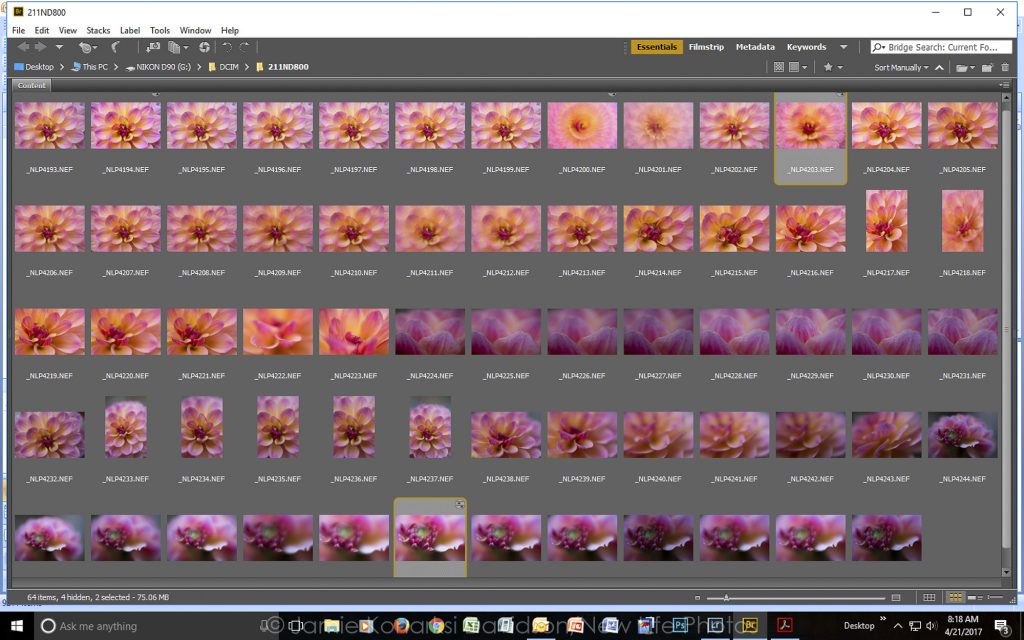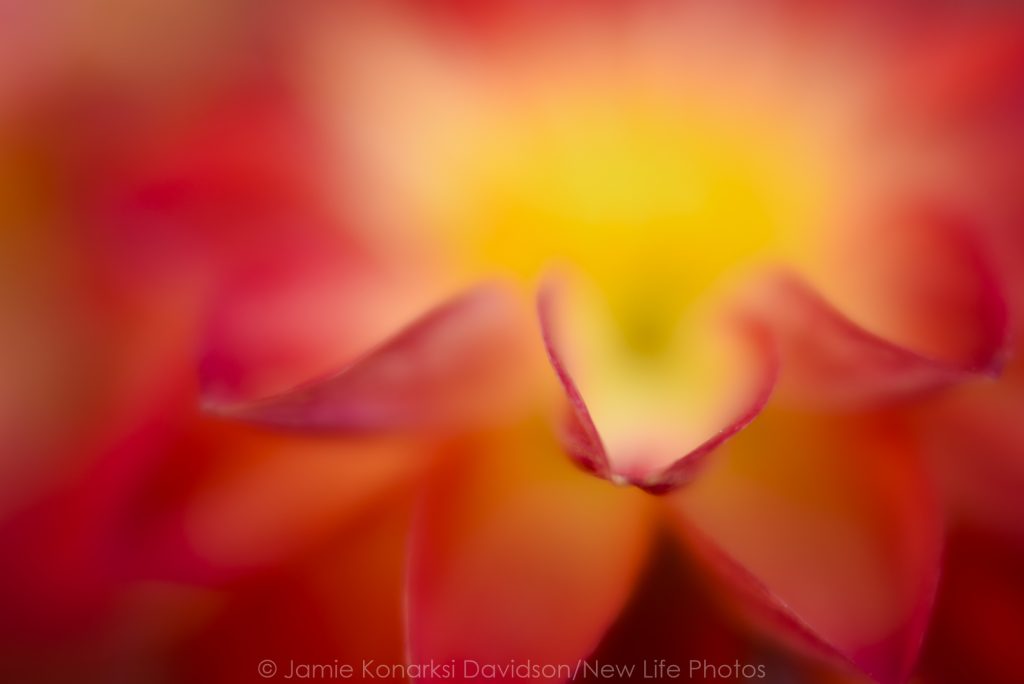The simple things are also the most extraordinary things, and only the wise can see them. ‑Paulo Coelho
There is magic in the world of smalls… both in the challenges and the rewards. Those old enough to remember the commercial for Calgon bubble bath will understand what I mean when I say that macro photography is “my Calgon.” The tag line included “take me away” and indicated an incredible, soothing and relaxing escape from the stressors of “real life.” Whenever my world is going crazy, give me a single flower and my macro gear, and everything swirling in my head and life evaporates. I’m drawn into a world of beauty, intrigue and interest that softens all edges and lightens all loads.
I must admit the initial learning curve for my macro adventures was far from stress-free. In fact, that curve resembled the most jagged and bumpy of roads. If it were a histogram, it would be filled with high peaks and low valleys repeated over and over and over. There are mountains to climb, barriers to break and challenges to accept and overcome. The efforts can make you feel like you are on a seesaw all by yourself, up and down, up and down. The goal is to find and achieve balance so that both ends are level and off the ground and your vision is reflected in the image.
A Few Challenges
Initial Barriers to Break. Probably the two barriers to succeeding in any area of photography that come to mind quickly (as I remember the beginning of my own journey) are 1) understanding your camera and what all the buttons are for, and 2) understanding the fundamentals of exposure. Your camera and all the gear that you add to it are tools for you to use. They do not know what you see or what you want to convey. What can your camera do on its own (Auto or Program) with little help from you besides pointing and shooting? How much more can you do to express yourself and capture the world as you see it if you become the driver (Manual, Aperture or Shutter Priority)? The difference in the results can be worlds apart.
What about focus? What does your camera do in “auto”? How does it know what to focus on? How do you become the focus driver? You need to learn how autofocus works in your camera and how and when to use manual focus. Remember, no matter how beautiful the subject, or how perfect the exposure and composition, a blurry image that needs to be sharp (somewhere) will inevitably be disappointing. Focus is important. Note: Very often, in the macro photography world, you will need to use manual focus to achieve sharpness and focus on the specific area in the frame that works for your subject and vision. Never let an autofocus point drive your composition.
What about Depth of Field? Okay, so now you have the focus you want, but is there too much or too little in sharp focus? How much do you need? How do you know? The answer is often, “it depends.” What’s your subject and what’s your vision? If you can answer this two-part question, you’ll be closer to choosing an aperture that brings your vision into the image and before the viewer. What difference does it make?
Sparring With the Elements. Some things are simply out of our control … or are they? The elements we battle in the macro world include wind, water and light. We cannot control the weather, but we can find ways to work with those things that test our patience. With light breezes, we can set up and wait for the still moment. We can bring our subjects indoors or we can create wind shields that work in the field. As for rain, we can welcome it or wait things out. Umbrellas can help (especially with someone else holding it for you). Raindrops and saturated colors are a few of the perks.
Whether the light of day is dark or bright, there are ways to work with any situation. A few lighting tools can combat many challenges. Flash with off-camera cord can light your subject and also help with motion and wind. If you prefer not to use flash, then consider these tools – all of which can fit in one small package and handle a multitude of lighting challenges. My natural light battle kit includes: A 22” 5-in-1 Diffuser/Reflector set, a 12# silver/gold reflector, small flashlight. Tuck the small reflector and flashlight in the larger case, attach a carabiner and hook to your belt loop or camera bag. This is what I use most of the time for me.
More than a Few Rewards
Photography is my soul food. I cannot imagine my life and world without being able to express myself using image making with my camera and all the creative tools available. Macro photography is without question the deepest and richest and most delicious of all the soul foods for me. It allows me to see and enter worlds that fascinate, amaze and entertain. It slows down the pace, invites me to explore, build patience, and to heal. And, while not every image or session with my subjects results in spectacular creations, I leave each measure of time better for the efforts. Being able to photograph the beauty and treasures in nature has a healing effect that is beyond modern medicine.
I came to photography in my early 30s in between two diagnoses with breast cancer. During the second stretch of treatment, I could not be around people as I had no immune system. And while the medicine and treatment saved my life, it was photography that soothed and healed my soul. And for weeks I sought solace in the magnificent gardens of Sarah P. Duke Gardens in Durham, NC. There was beauty all around me, and all my senses were awakened. It will always hold a special place in my heart. It was there and in another field of wildflowers that I realized that photography was more than a hobby and that macro photography was more a passion than a passing interest. This should explain my having three macro lenses and other tools to help me get closer to my subjects. Better than any therapy I know.
Give me one hour with one flower and a whole new world is discovered – in it, and in me. When I give myself that time, I also challenge myself to see beyond the obvious and beyond the name that identifies the thing. I work every angle, examine the light, the shape, curves, lines, textures and push to find something new and different, to go deeper in the exploration. It takes focus, time, persistence and openness to make discoveries. And there are always lessons in the doing. There is never nothing to learn or nothing to see. Give yourself the gift of time with something that feeds your own soul. You’ll be surprised how good it can be and what you’ll discover.
If you find yourself drawn to the small details in ordinary objects, it’s possible that macro photography holds some magic for you as well. When the weather is less than perfect or your busy life keeps you off the road, pick a flower or a jar of buttons, or shells or marbles and play. You can step outside and enjoy the weather while you play or find a spot with nice window light to get your fix.
And if you’re not sure that macro photography is for you, get yourself a supplemental close-up lens (like the Canon 500D) or a set of extension tubes and try them out with the lenses you have. You may have to work through some challenges with working distance and such, but you can do it. I started with the simplest set of close-up filters and knew immediately that the world of smalls held incredible magic for me. Perhaps, you will, too.
